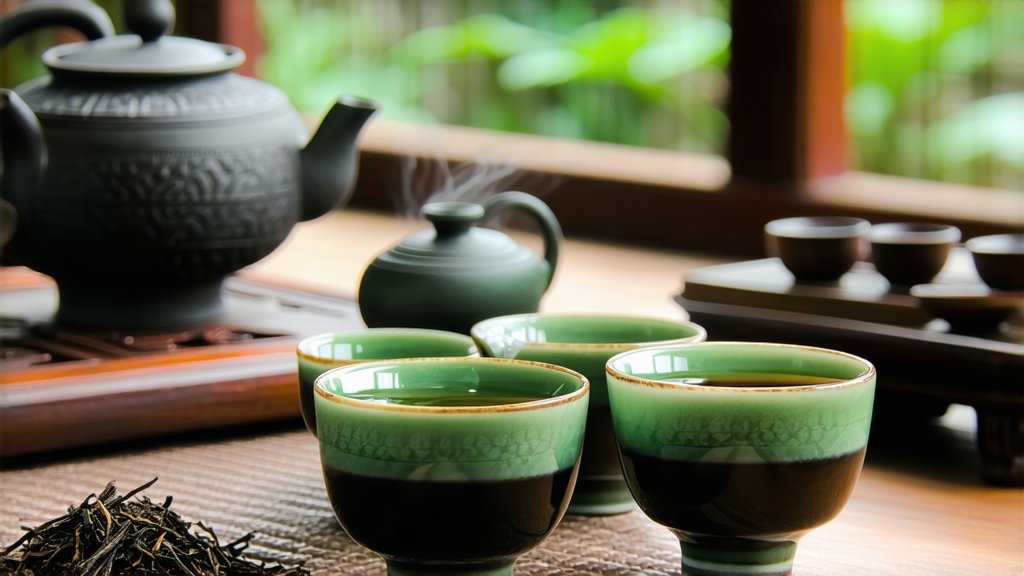
Pu-erh tea, a revered gem within the vast expanse of China's dark tea repertoire, stands as a testament to the country's rich tea heritage and the intricate artistry involved in tea production. Originating from the Yunnan province, this unique variety of tea has captivated palates worldwide with its distinctive flavor profile and numerous health benefits. In this exploration, we delve into the history, varieties, manufacturing process, and the art of appreciating Pu-erh tea.
History and Origins
The story of Pu-erh tea traces back over a millennium, with its roots firmly planted in the ancient tea-growing regions of southwestern China. The town of Pu'er in Yunnan Province, after which the tea is named, became a significant trading hub during the Tang Dynasty (618-907 AD), facilitating the exchange of goods along the Tea Horse Road. This historic route not only connected diverse cultures but also played a crucial role in spreading the popularity of Pu-erh tea across Asia.
Varieties of Pu-erh Tea
Pu-erh tea comes in two primary forms: raw (Sheng) and ripe (Shou). Raw Pu-erh undergoes natural fermentation over time, allowing it to develop complex flavors that mature with age. On the other hand, ripe Pu-erh is subjected to a controlled fermentation process known as "wet piling," which accelerates the aging process and imparts a mellow, earthy taste. Both types offer unique sensory experiences, catering to different preferences among tea connoisseurs.
Manufacturing Process
The journey from leaf to cup for Pu-erh tea involves several meticulous steps:
- Plucking: Only the top one or two leaves and a bud are harvested, ensuring optimal quality.
- Withering: Freshly picked leaves are spread out to lose moisture, softening them for subsequent processing.
- Rolling: Leaves are rolled into tight spirals, breaking cell walls to facilitate enzymatic reactions during fermentation.
- Fermentation: For raw Pu-erh, this step occurs naturally over months or even decades, while ripe Pu-erh undergoes a more accelerated fermentation process under controlled humidity and temperature conditions.
- Drying: After fermentation, the tea is dried to halt further fermentation and preserve its characteristics.
- Aging: Many enthusiasts believe that aged Pu-erh tea develops superior flavors and aromas, making old tea cakes highly sought after.
Appreciating Pu-erh Tea
To truly appreciate Pu-erh tea, one must engage in the ritualistic practice of Gongfu Cha, a traditional Chinese tea ceremony emphasizing precision and mindfulness. Here’s a basic guide to savoring this exquisite brew:
- Warm the Teapot and Cups: Begin by rinsing your teapot and cups with hot water to ensure they are at an optimal temperature for brewing.
- Measure the Tea: Use approximately 5 grams of loose leaves or a small piece broken from a tea cake per 100ml of water.
- Steeping: For raw Pu-erh, steep for about 10-15 seconds initially, increasing the time with each subsequent infusion. Ripe Pu-erh may require slightly longer steeping times due to its denser texture.
- Observe the Liquor: Pay attention to the color, clarity, and viscosity of the tea liquor, which can vary significantly between raw and ripe Pu-erh.
- Inhale the Aroma: Gently swirl the tea in your cup and take in the nuanced fragrances before sipping.
- Taste Mindfully: Sip slowly, allowing the tea to coat your palate, noting its complexity, balance, and finish.
Pu-erh tea is not merely a beverage; it embodies centuries of cultural tradition and craftsmanship. From its storied past along the Tea Horse Road to its modern-day status as a symbol of sophistication in tea culture, Pu-erh continues to enchant those who seek a deeper connection with nature and history through their teacups. Whether you prefer the vibrant vitality of raw Pu-erh or the mellow depth of its ripe counterpart, exploring this dark tea treasure promises a rewarding journey for any tea lover.